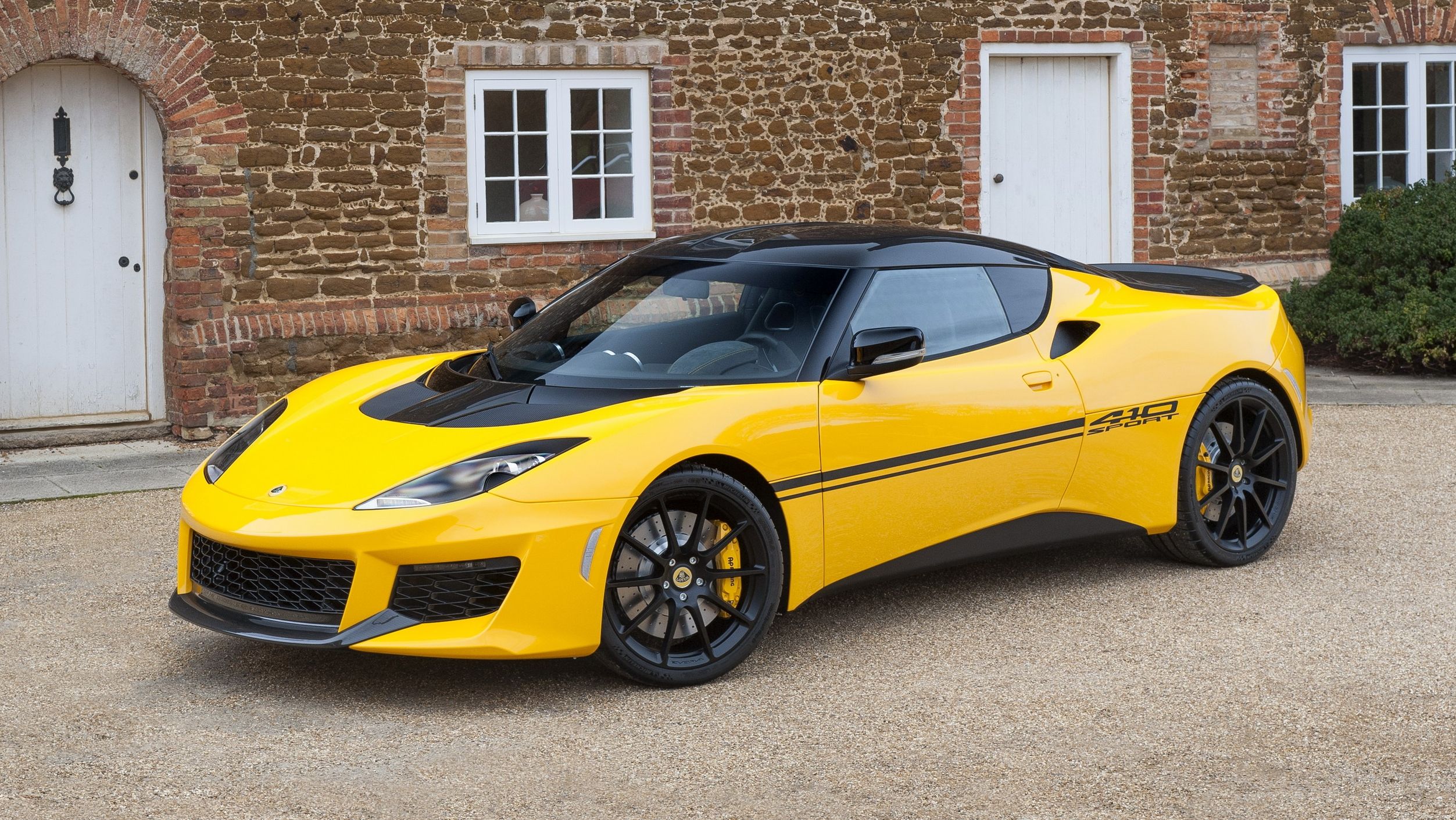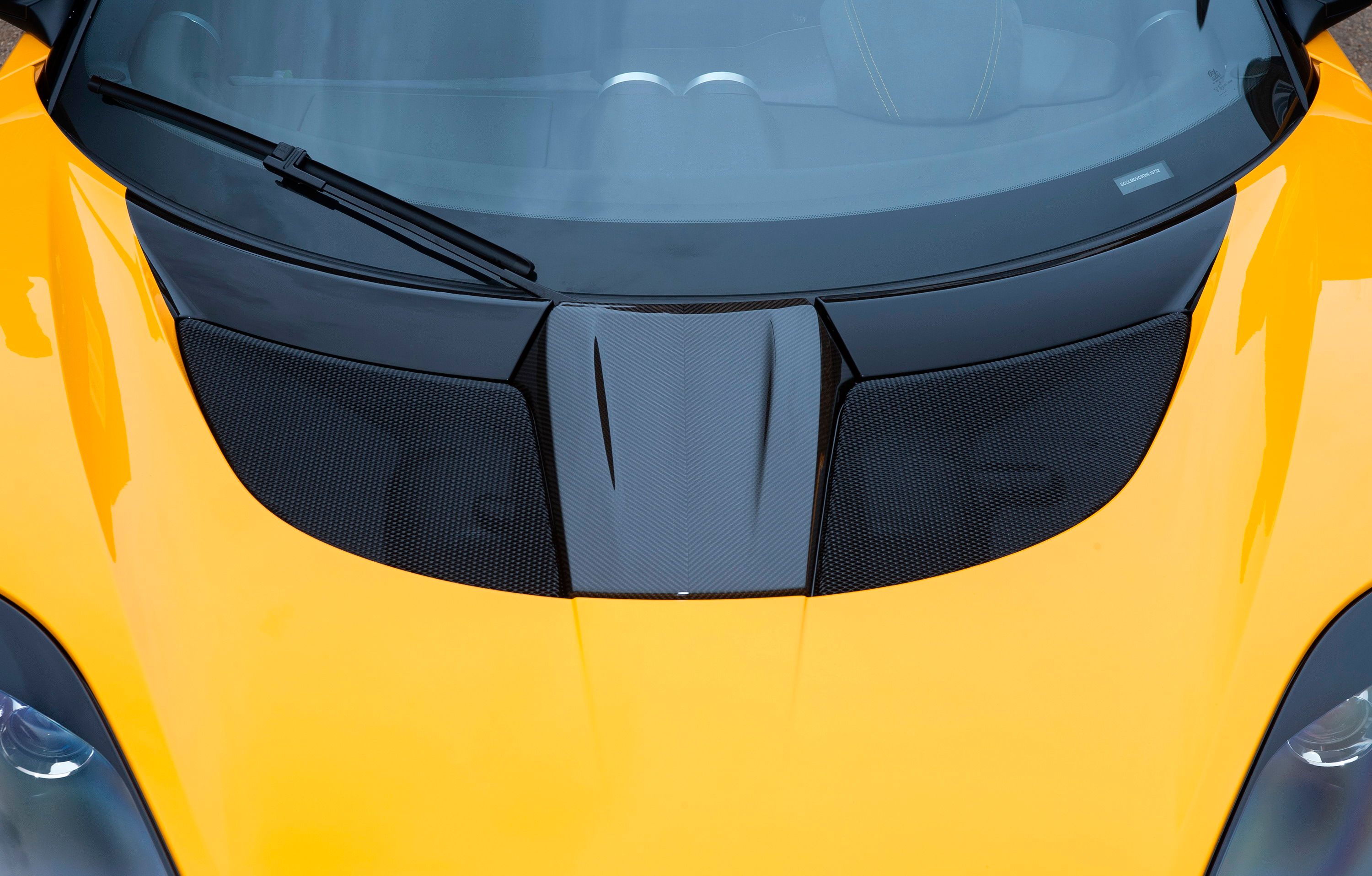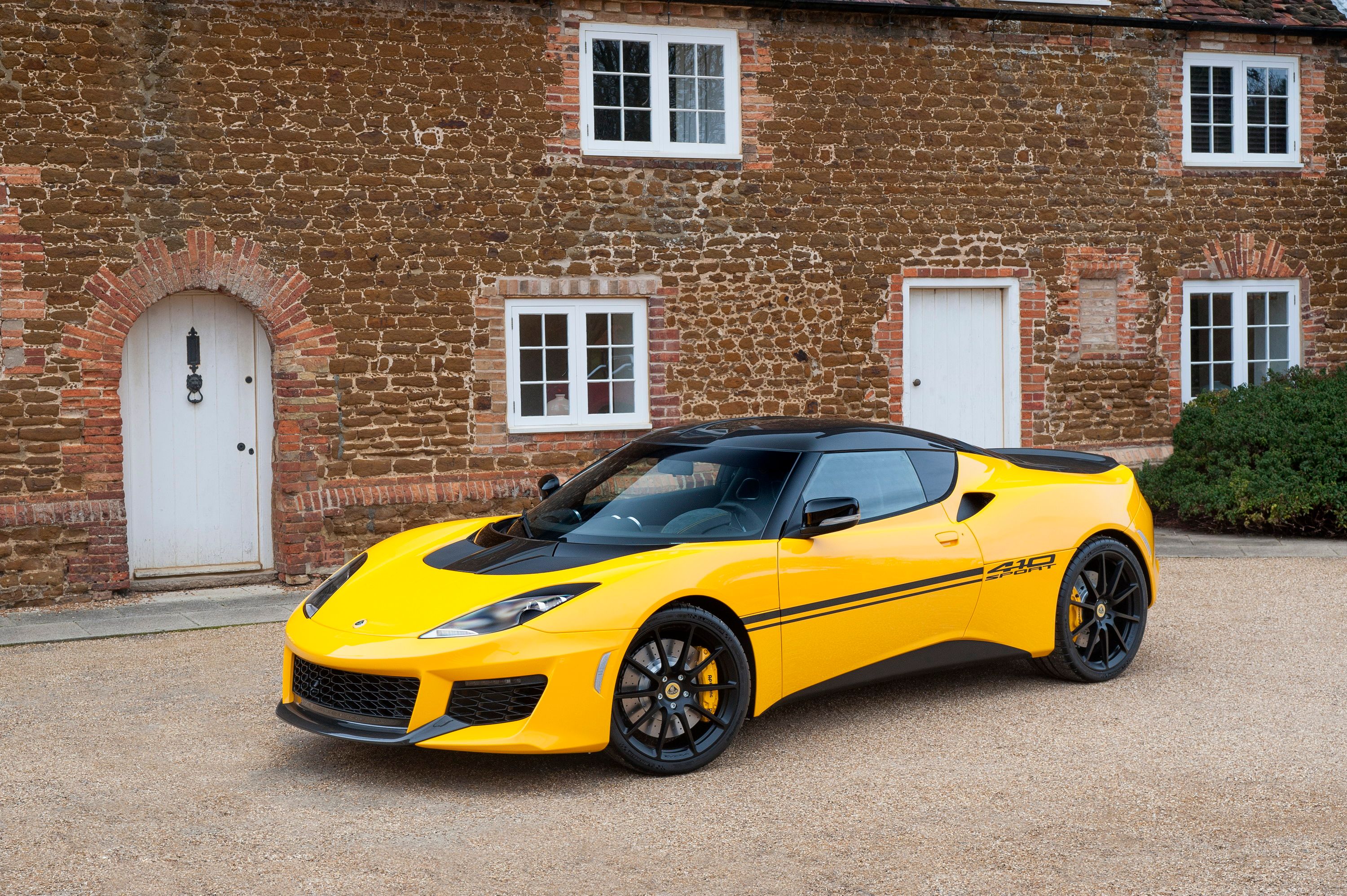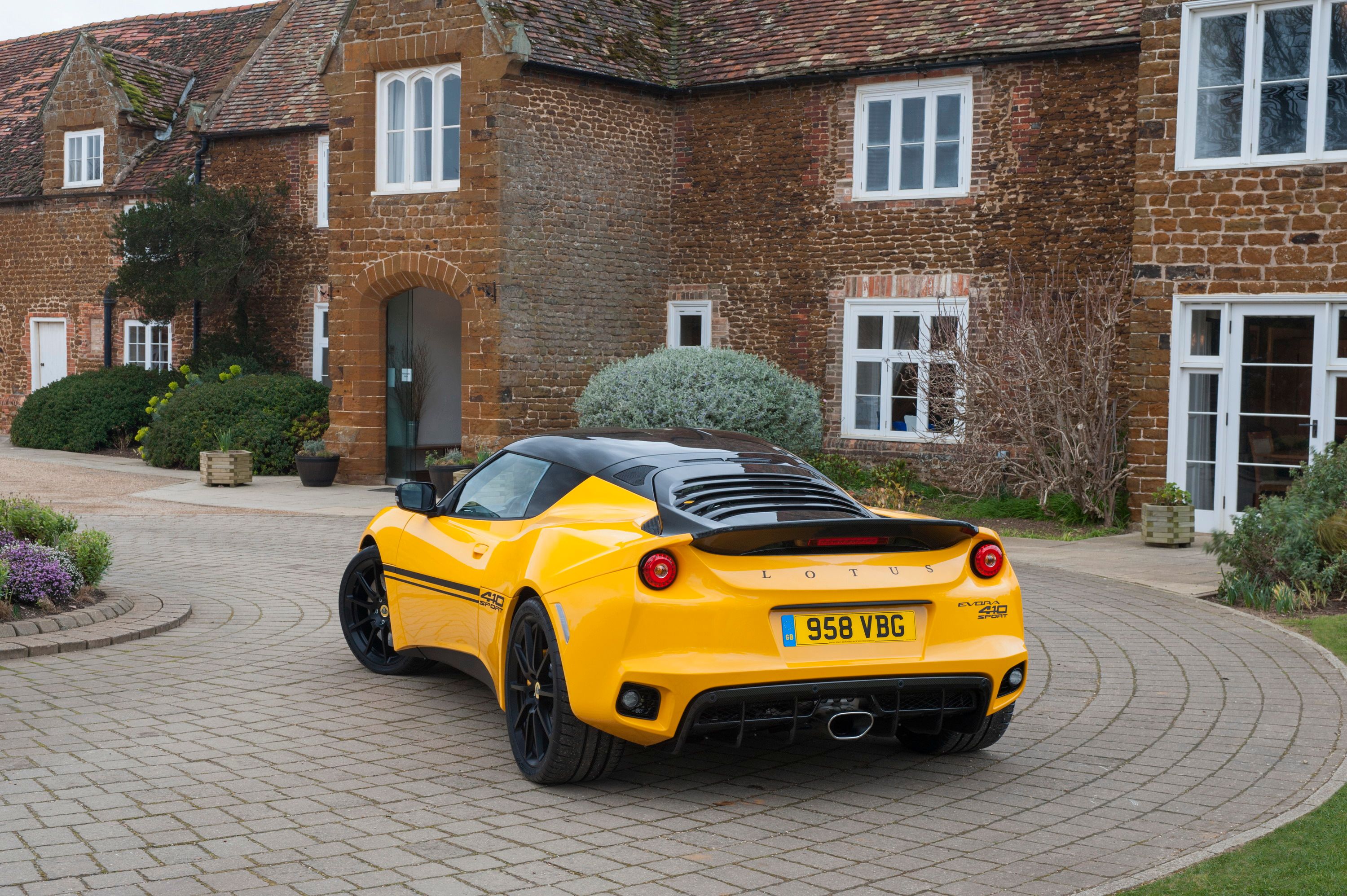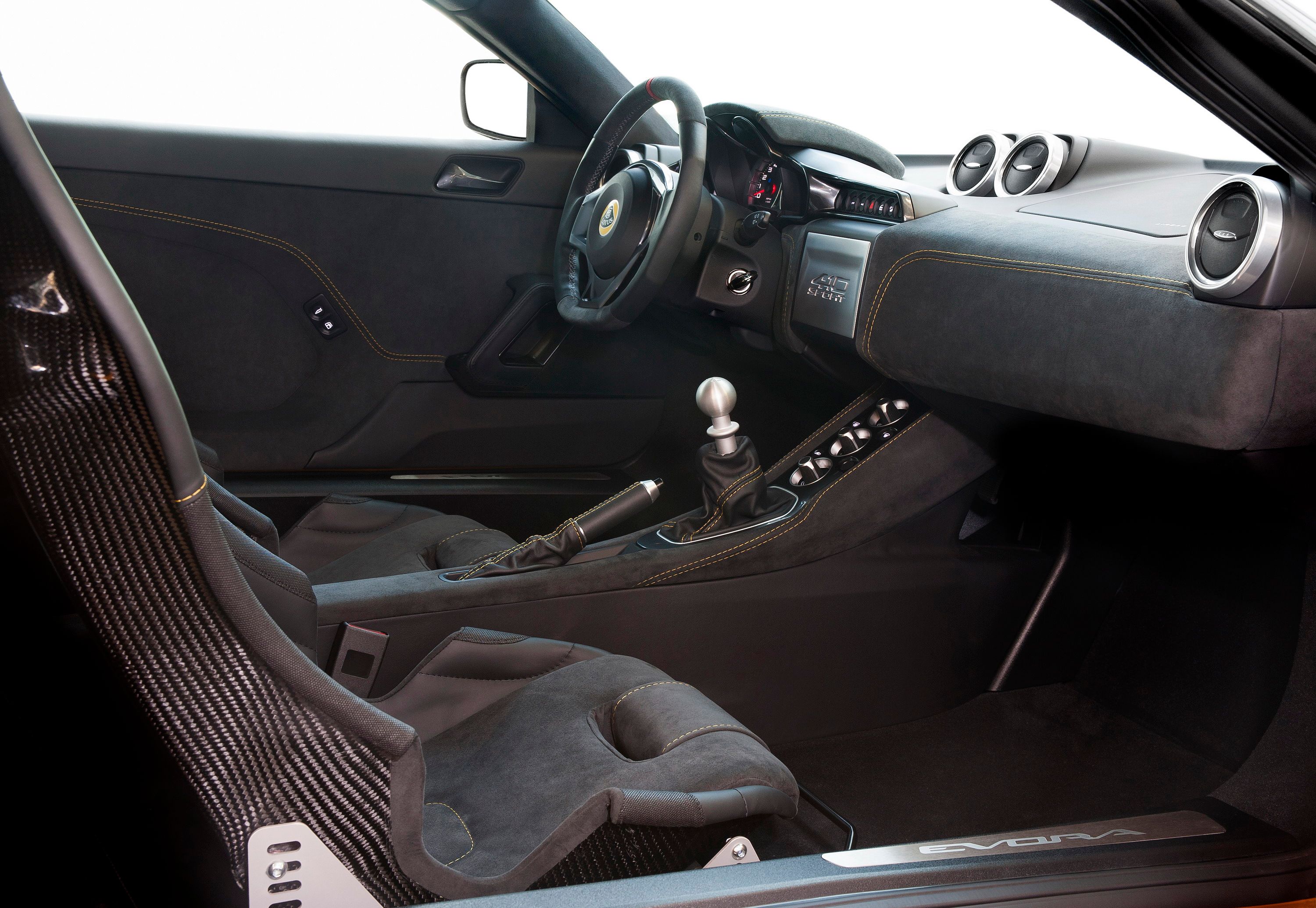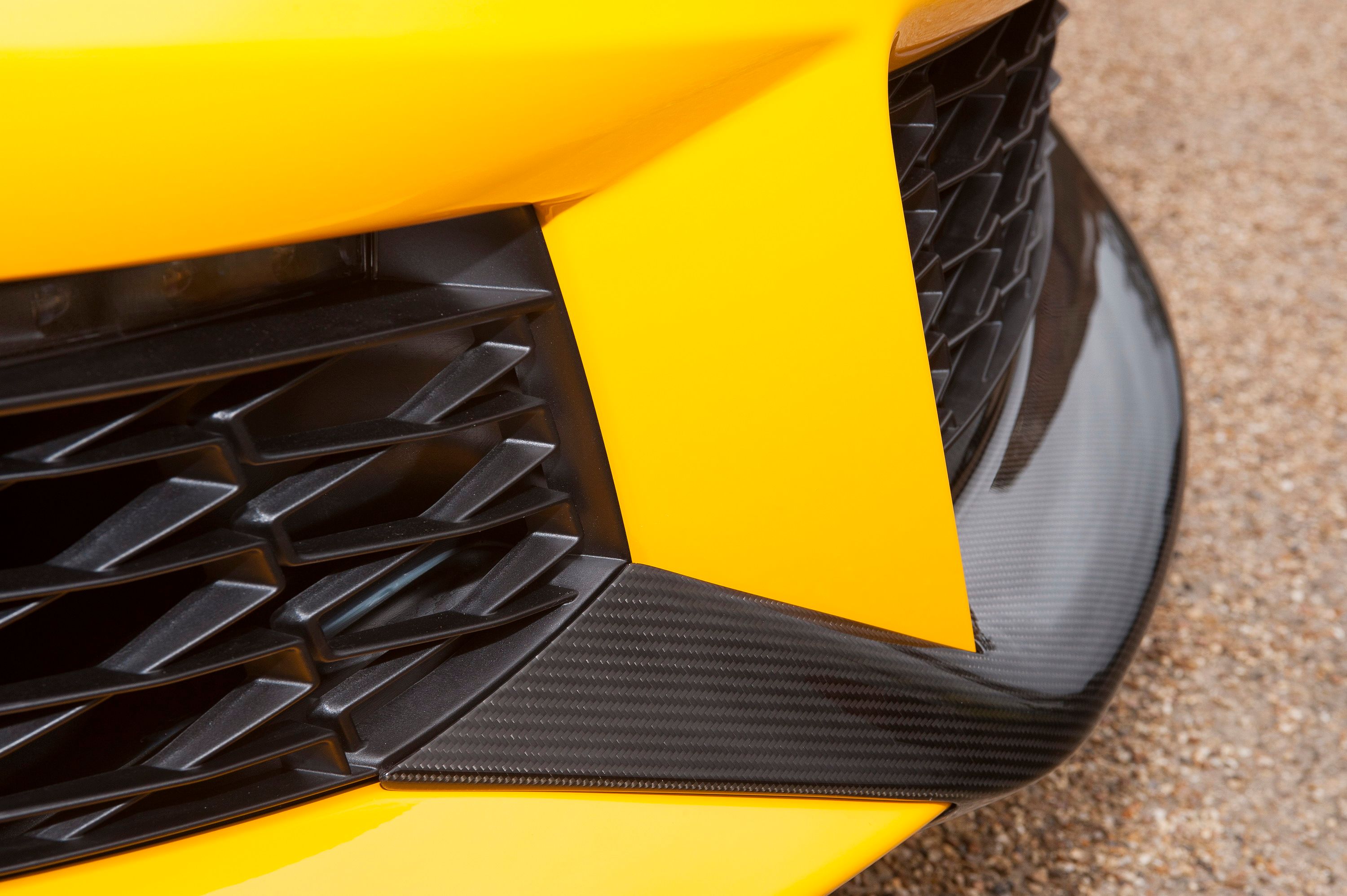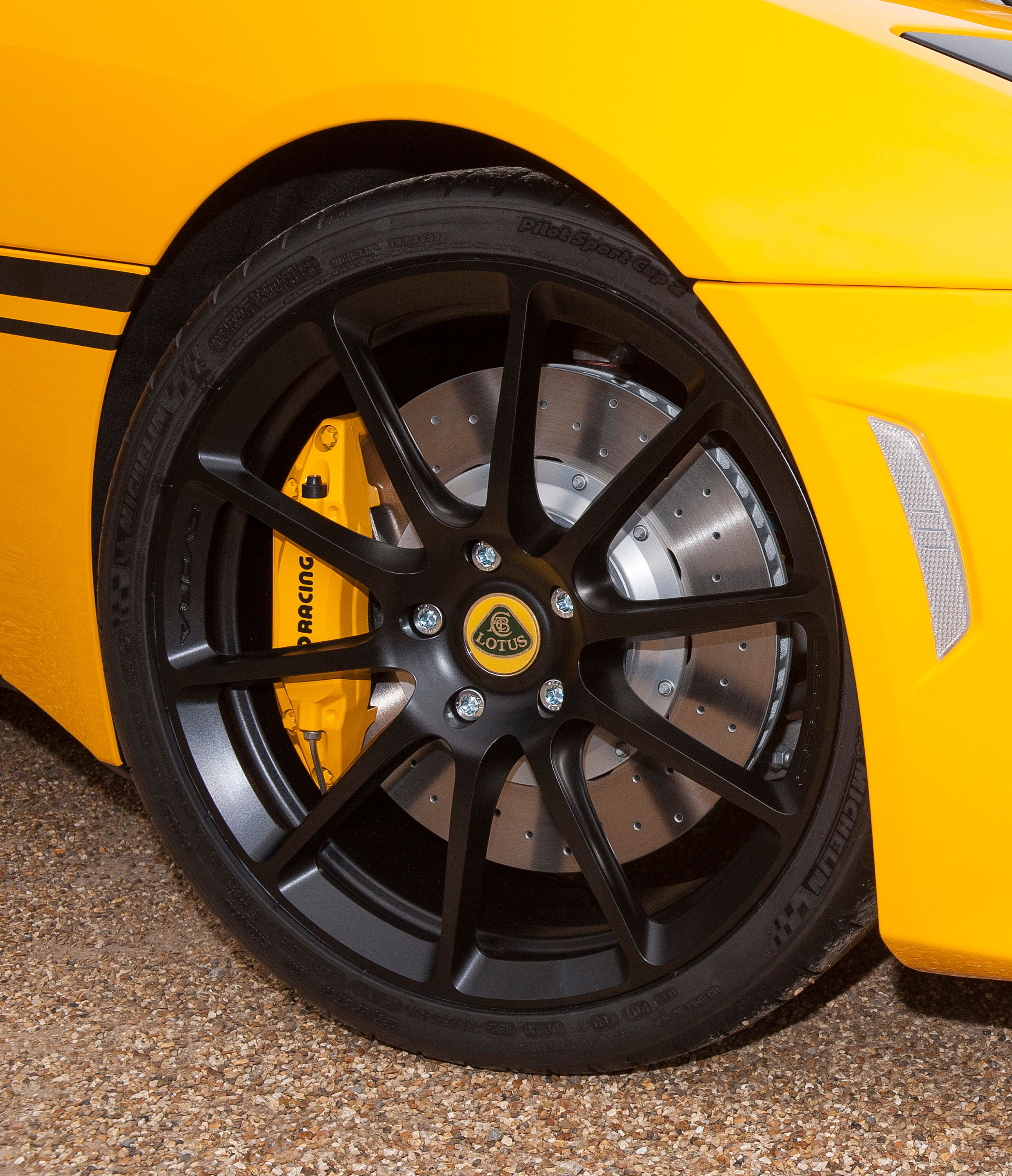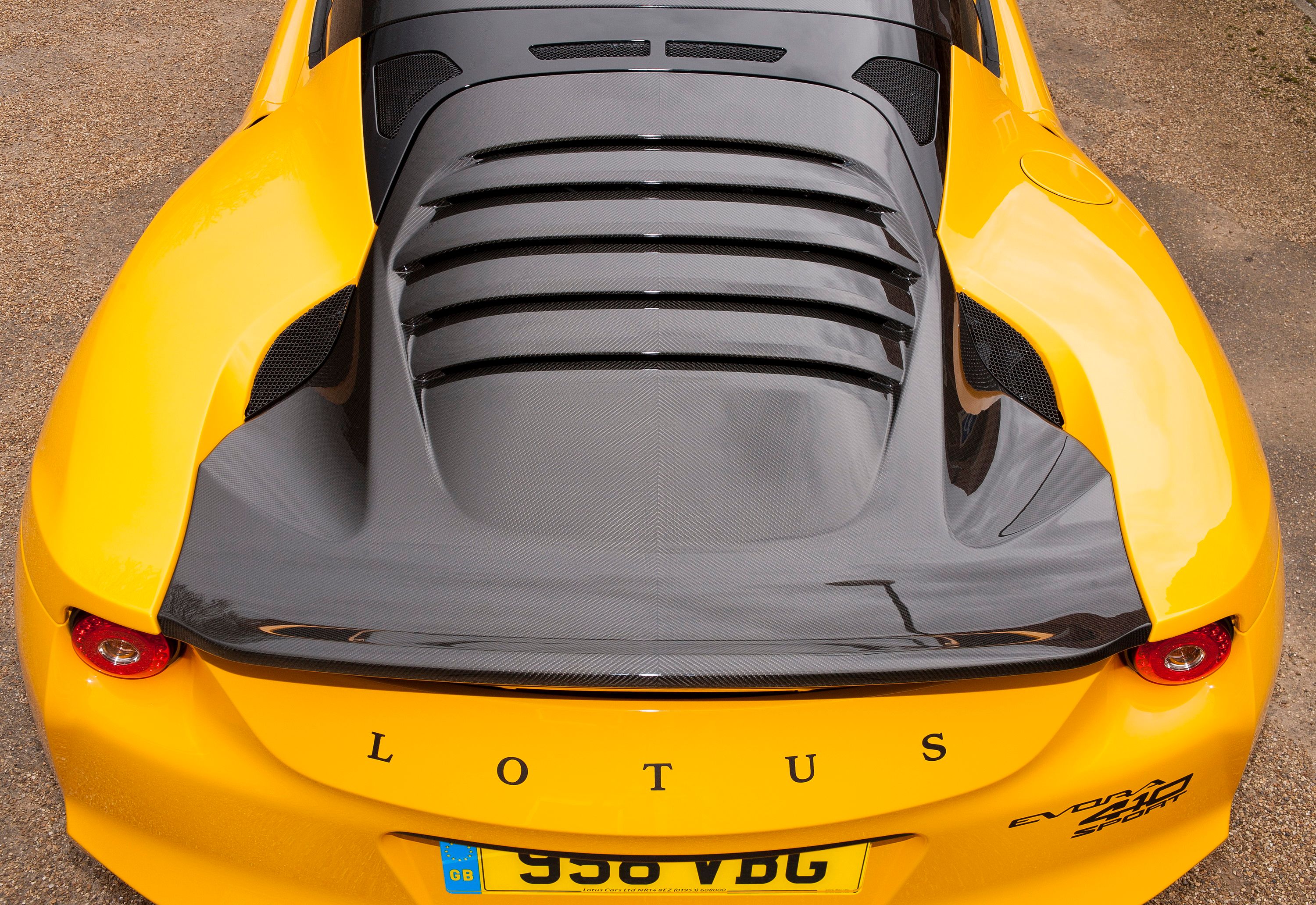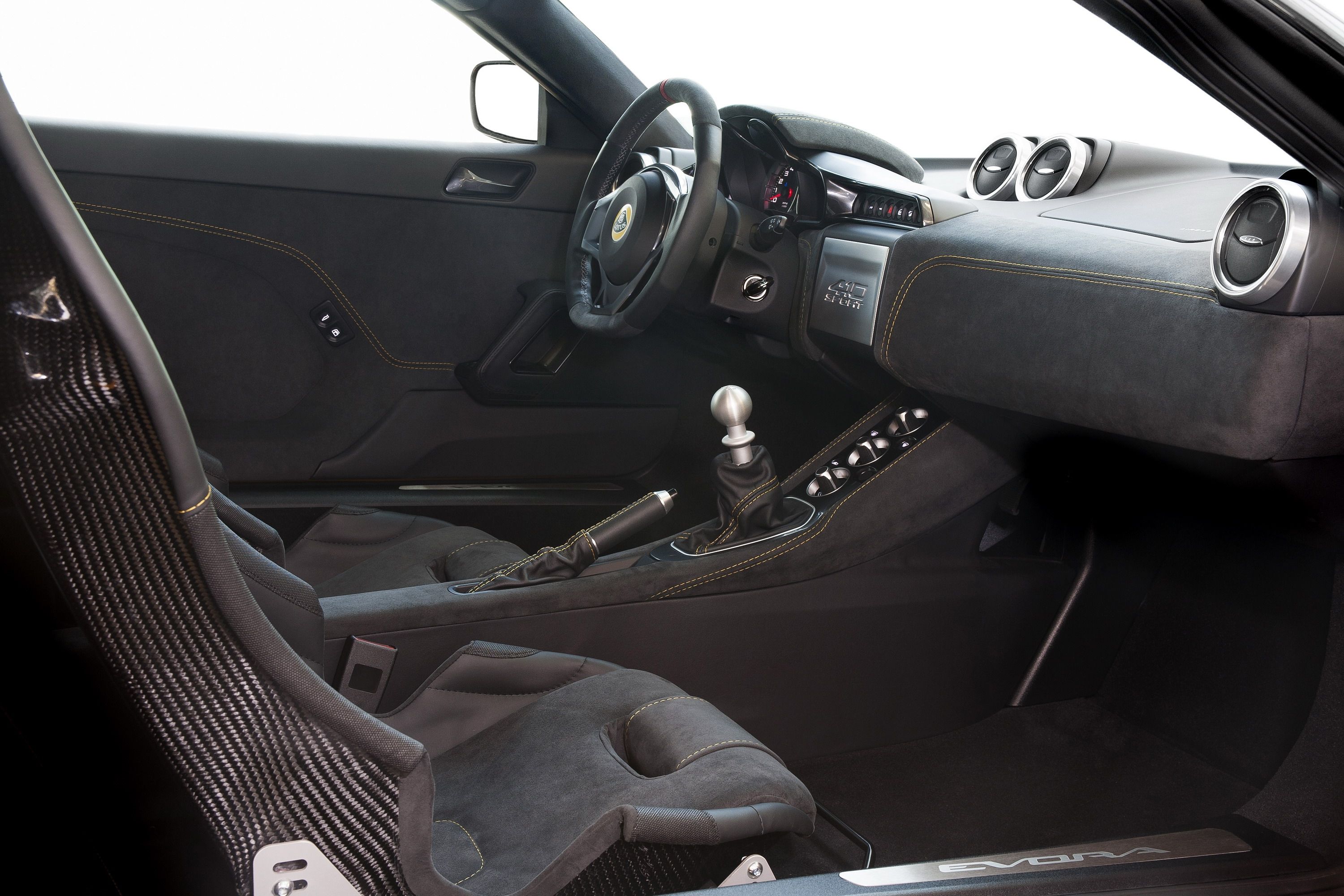For many years, Lotus->ke49 sports cars have been developed on the same recipe that involves creating a lightweight, agile model and then updating it by "adding" more lightness. This is how the Elise->ke1678 and Exige->ke525 have become increasingly quicker without major power upgrades, and that's exactly what Lotus just did to the range-topping Evora 400. For the 2016 Geneva Motor Show,->ke228 the Brits gave the Evora->ke3240 a special-edition->ke2041 treatment that includes loads of carbon-fiber, an uprated engine, and a 0-to-60 mph sprint that makes it quicker than any non-Turbo Porsche 911 Carrera out there. It goes by the name Evora Sport 410, it will be built in limited numbers, and more importantly it will cross the pond to the United States later in 2016.
"We couldn’t help ourselves, and many may have guessed what we were planning following our recent announcements. We wanted to make the Evora even better: lighter, faster and sharper, but our team has exceeded our expectations," said Group Lotus CEO Jean-Marc Gales. "Lotus has distilled what makes the Evora so special into something that’s even more focused. The result is dynamically excellent and nothing short of superb."
The Sport 410 update comes only 12 months after the revised Evora 400 made its debut at the 2015 Geneva Motor and is the fastest and most nimble Evora launched to date, lapping the company's Hethel test track significantly quicker than the standard model. Of course, the Sport 410 is about more than just extra horsepower and speed, but you'll have to keep reading to find out more about that.
Continue reading to learn more about the Lotus Evora Sport 410.
2017 Lotus Evora Sport 410
- Make: Array
- Model: 2017 Lotus Evora Sport 410
- Engine/Motor: V6
- Horsepower: 410
- Torque: 302
- [do not use] Vehicle Model: Array
Exterior
Visually, the Evora Sport 410 is identical to the Evora 400, save for the "Sport 410" decal and stripes on the sides, the 10-spoke forged aluminum wheels, the rear wing, and the lowered suspension. However, the truly important changes lie in the materials used for certain body panels. Specifically, the Sport 410 received an impressive amount of carbon-fiber, with the lightweight material being used for the front splitter, roof, quarter panels, rear diffuser, and tailgate.
These new components not only make the Evora Sport 410 lighter than its standard sibling, but also improves the car's aerodynamic downforce by 15 percent with no increase in drag. Most extra downforce comes from the new tailgate, which also incorporates a louvered section instead of the regular glass element. The new tailgate is inspired by classic Lotus models and gives the Evora Sport 410 a racy appearance.
Finally, the carbon-fiber components also contribute to the sports car's livery, giving it a two-tone finish. No matter the exterior color, the splitter, upper front hood section, roof, tailgate, rear spoiler, and diffuser will always be delivered in bare carbon-fiber. Needless to say, this gives the Sport 410 a more track-oriented look, a feat Lotus gearheads will definitely appreciate.
Like all models launched recently, the Evora Sport 410 can be customized via the Lotus Exclusive program, which enables buyers to pick between race-themed body colors such as Essex Blue and Motorsport Black, as well as a range of racing stripes.
Interior
Much like the exterior, the interior is identical to the Evora 400 styling-wise, but with significant weight-saving upgrades as far as materials go. Notable changes include a pair of carbon-fiber, race-derived seats wrapped in black or red Alcantara and one-piece door panels finished in the same material, both with contrast stitching. Lotus also removed the armrests and stowage pockets from the door panels and relocated the tailgate and fuel cap release buttons. For models ordered without an infotainment system, the door panels come without speakers.
Other standard features include a lightweight aluminum gear knob for manual models, gunmetal door release levers, Dark Grey headlining, black carpet, aluminum plate and door sills etched with "Evora Sport 410" lettering, lightweight footrest and aluminum pedal pads. Both the steering wheel and center console are trimmed in Alcantara as standard.
The infotainment system is optional and includes iPod and Bluetooth connectivity, a four-speaker sound system, satellite navigation, and a reverse camera. The air conditioning system, sound insulation, cruise control, and sound visors also need to be purchased at extra cost. Buyers who need more comfort can opt for the adjustable Sparco seat from the Evora 400.
Drivetrain
Under the hood, the Evora Sport 410 comes with the same Toyota-sourced, 3.5-liter V-6 found in the standard Evora 400. However, the supercharged unit, also shared with the race-bred 3-Eleven model, was massaged to the tune of 410 horsepower and 302 pound-feet of torque, a ten-horsepower boost over the Evora 400.
While ten extra horses might not sound like much, the fact that the Sport 410 tips the scales at 1,325 kg (2,921 pounds), a 70-kg (154-pound) reduction over the Evora 400, makes it significantly quicker than its standard sibling. Sprinting from 0 to 60 mph takes four seconds with the manual and 3.9 ticks with the automatic, making the Sport 410 the first road-legal Evora to achieve the benchmark in under four seconds. At the same time, it is two tenths quicker than the Evora 400. Top speed, on the other hand, remained unaltered at 186 mph.
Not surprisingly, the Sport 410 is also quicker around the track. The sports car lapped the company's Hethel test track in one minute and 28 seconds, an impressive three seconds faster than the Evora 400. Compared to the Elise Cup 250, the quickest Elise to date, the Sport 410 is six seconds faster on the same race course.
Standard equipment also includes a six-speed manual transmission, a Torsen-type limited-slip differential, active exhaust valve control, and a lightweight low inertia fly wheel. A six-speed automatic transmission with lightweight aluminum paddles is optional.
Drivetrain Specifications
|
Type |
3.5 liter V6, 24 valve, water cooled, all-aluminum engine, with Edelbrock supercharger |
|
Output |
410 HP @ 7,000 RPM |
|
Torque |
302 LB-FT @ 3,500 RPM |
|
0-60 mph |
4.0 seconds (manual)/3.9 seconds (automatic) |
|
Top speed |
186 MPH (manual)/174 MPH (automatic) |
Chassis, Suspension and Brakes
The car’s reduced curb weight has allowed the recalibration of the suspension, which now features improved geometry, revised damping, and a ride height that's 5 mm (0.2 inches) lower than the Evora 400. These changes give the Sport 410 sharper handling and better body roll control. Lotus claims that the ride comfort and composure of the Evora 400 have been retained despite the modifications. Stopping power comes from two-piece, cross-drilled and ventilated brake discs with AP Racing four-piston calipers. The ultra-light aluminum wheels are wrapped in standard Michelin Pilot Sport tires or optional Michelin Cup 2 rubber.
Prices
Lotus has yet to announce U.S. pricing for the Evora Sport 400, but did say that a specific North American version will be introduced later in 2016. On the other hand, we do know that the special-edition sports car retails from £79,900 in the U.K., which represents an 11-percent premium over the Evora 400. With the latter retailing from $89,900 in the U.S., it's safe to assume that the Sport 410 will have a starting price of around $99,800. Production will be limited to only 150 unit globally.
Competition
Porsche Cayman GT4
The GT4 is the newest model to wear the Cayman badge, and unlike any of its siblings until now, it sports a 911 Carrera S-sourced engine under the rear lid. The 3.8-liter, flat-six mill cranks out 385 horsepower and 309 pound-feet of twist, taking the mid-engined coupe from 0 to 60 mph in 4.2 seconds. Its top speed is rated at 183 mph. Although it's slightly slower than the Evora Sport 410, the Cayman GT4 is the more affordable of the two, fetching $84,600 before options. Not an easy choice, right?
Find out more about the Porsche Cayman GT4 here.
Alfa Romeo 4C
The 4C might not be as track-focused as the Sport 410 and GT4, but it features a stylish design and a carbon-fiber tub that makes it nearly as light as the Evora. It's significantly less powerful though, with the 1.75-liter, four-banger sending only 237 horsepower and 258 pound-feet of twist to the wheels. Hitting 60 mph from a standing start takes 4.5 second, making the Alfa a half-second slower than the Lotus. On the other hand, the 4C's base price is set at only $53,900, about four grand cheaper than what the Evora Sport 410 is expected to fetch.
Read more about the Alfa Romeo 4C here.
Conclusion
The Evora 400 was an attractive upgrade to the previous Evora S, but the Sport 410 is definitely the car to have if you're into no-nonsense sports cars. It's only a bit more powerful than the standard model, but the fact that it's 154 pounds lighter is enough to turn it into a record-breaking machine. Until Porsche comes up with a quicker Cayman GT4, the Evora Sport 410 will basically rule the compact sports car kingdom. The extra carbon-fiber and the limited edition run should make enthusiasts forget about that $15,000 premium over the Cayman GT4.

